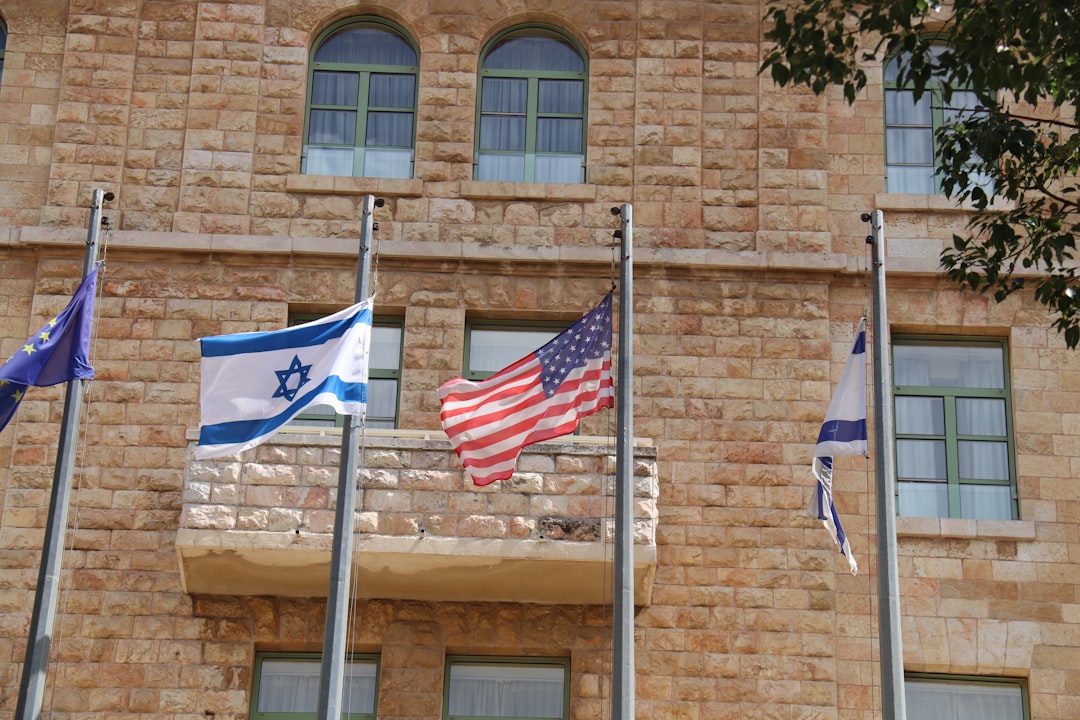A Bold Move Amid Fragile Truce (Image Credits: Unsplash)
Tel Aviv – Under a clear autumn sky, the hum of airport activity signals urgent diplomacy as tensions simmer just miles away.
A Bold Move Amid Fragile Truce
Imagine stepping into the heart of a region where every conversation could tip the balance toward calm or chaos. That’s the scene as JD Vance, the U.S. Vice President, arrives in Israel this week. His visit comes at a critical moment for the Gaza ceasefire, a deal hammered out earlier this year that’s already showing cracks.
The agreement, brokered with heavy U.S. involvement, promised a permanent halt to fighting, phased withdrawals, and exchanges of hostages and prisoners. Yet reports of violations from both sides have piled up, turning what should be a breakthrough into a ticking time bomb. Vance’s presence underscores America’s determination to keep the peace alive, even as global eyes watch closely.
Experts point out that without swift intervention, the truce could unravel completely. This trip isn’t just symbolic; it’s a direct push to renegotiate terms and rebuild trust between Israel and Hamas.
Key Elements of the Original Deal
Let’s break down what made headlines back in January. The ceasefire kicked off with a six-week pause in hostilities, allowing for gradual Israeli troop pullbacks from parts of Gaza. Humanitarian aid surged in, with hundreds of trucks delivering essentials to a battered population.
On the human side, Hamas agreed to release 33 Israeli hostages in the first phase. In return, Israel committed to freeing dozens of Palestinian prisoners, including some high-profile figures. It sounded straightforward on paper, a rare glimmer of hope after months of devastation.
Still, implementation hit snags early. Delays in withdrawals and accusations of breaches eroded goodwill, setting the stage for today’s urgency.
Vance’s Role in the Diplomatic Push
Vance isn’t new to Middle East shuttles, but this one feels personal. Landing amid whispers of renewed airstrikes, he met immediately with Israeli leaders to stress the costs of escalation. His message? The U.S. stands ready with aid and pressure, but only if both parties recommit.
Behind closed doors, talks focus on expanding safe zones and verifying aid flows. Vance has hinted at incentives, like boosted economic support for Gaza reconstruction, to sweeten the pot. It’s a classic carrot-and-stick approach, tailored to the moment.
Challenges on the Ground
Gaza’s streets tell a different story from conference rooms. Families displaced multiple times wonder if this truce will hold longer than the last one, which lasted just two months. Recent flare-ups, including rocket fire and targeted strikes, have claimed lives and deepened divides.
International observers note over a thousand reported violations since October’s renewal attempt. Hamas demands full Israeli withdrawal; Israel insists on security guarantees. Caught in the middle, civilians bear the brunt, with aid convoys sometimes blocked or delayed.
Yet glimmers of progress exist. Local leaders report increased cross-border dialogues, small steps that could build momentum if nurtured.
Broader Implications for U.S. Policy
This isn’t isolated to one strip of land. A stable Gaza truce could ease regional tensions, from Lebanon to Iran-backed groups. For the U.S., success here bolsters credibility in peace efforts worldwide, especially with elections looming back home.
Failure, though, risks wider conflict. Analysts warn of spillover effects, drawing in allies and straining resources. Vance’s itinerary includes stops to rally support from key partners, emphasizing shared stakes.
What Happens Next?
Expect announcements soon on extended ceasefires or phased releases. Mediators like Qatar play a pivotal role, shuttling proposals between camps. The goal? A framework that lasts beyond headlines.
Optimism tempers caution. Past deals have collapsed under pressure, but current U.S. leverage – through military aid and sanctions threats – might tip the scales. Watch for joint statements from Vance and Israeli officials in the coming days.
| Stakeholder | Main Demand | U.S. Incentive |
|---|---|---|
| Israel | Hostage releases & security | Military aid boost |
| Hamas | Troop withdrawal & aid | Reconstruction funds |
| U.S. | Compliance & stability | Diplomatic backing |
Key Takeaways:
- The ceasefire hinges on mutual trust, fragile after recent violations.
- Vance’s visit aims to enforce original terms while adding new safeguards.
- Success could pave the way for lasting regional peace, but risks remain high.
In the end, diplomacy like this reminds us that peace often hangs by a thread, woven from tough talks and timely interventions. What do you think – can this trip turn the tide? Share your thoughts in the comments below.








